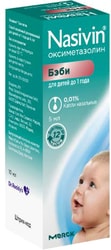Camel stomach rennet, also known as sychugin (сычужина), holds a significant place in culinary history and boasts emerging potential in various scientific fields. Traditionally harvested from the fourth stomach of camels, this natural enzyme plays a crucial role in cheesemaking, particularly in regions with a long history of camel herding. Its unique enzymatic properties provide specific characteristics to cheeses, impacting texture, flavor, and ripening processes. Unlike rennet derived from other animals, sychugin offers a distinct profile that contributes to the authenticity and unique character of certain cheeses.
Beyond its traditional use in food production, ongoing research explores the potential applications of camel stomach rennet in medicine and biotechnology. Its enzymatic activity presents opportunities in various biomedical areas, and its unique properties are being investigated for potential therapeutic uses. The sustainable sourcing and potential for large-scale production of sychugin are also attracting interest from researchers and entrepreneurs.
This natural resource provides a fascinating example of the intersection of traditional practices and modern scientific exploration. Further research promises to unlock its full potential, broadening its applications beyond its established role in traditional food production and opening exciting possibilities in a range of sectors.





